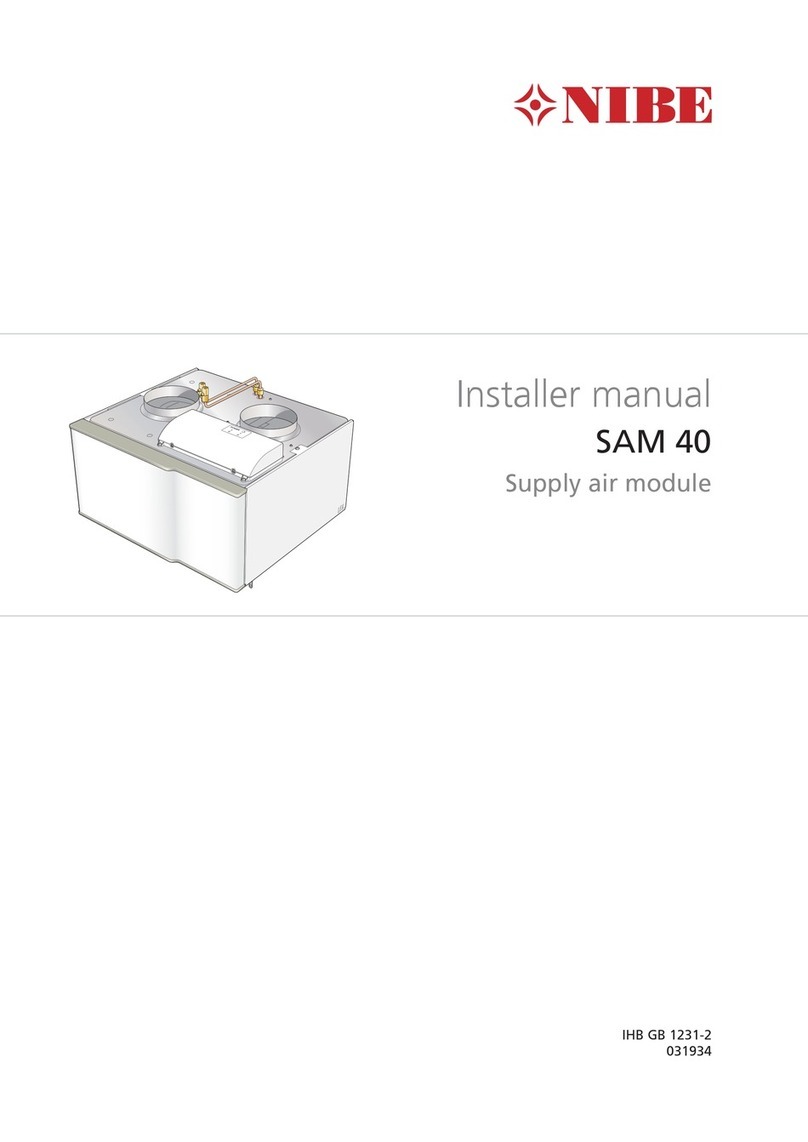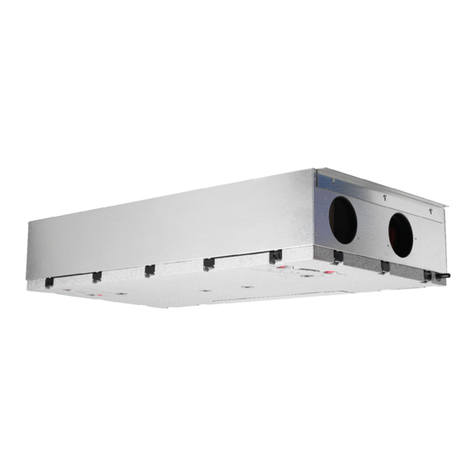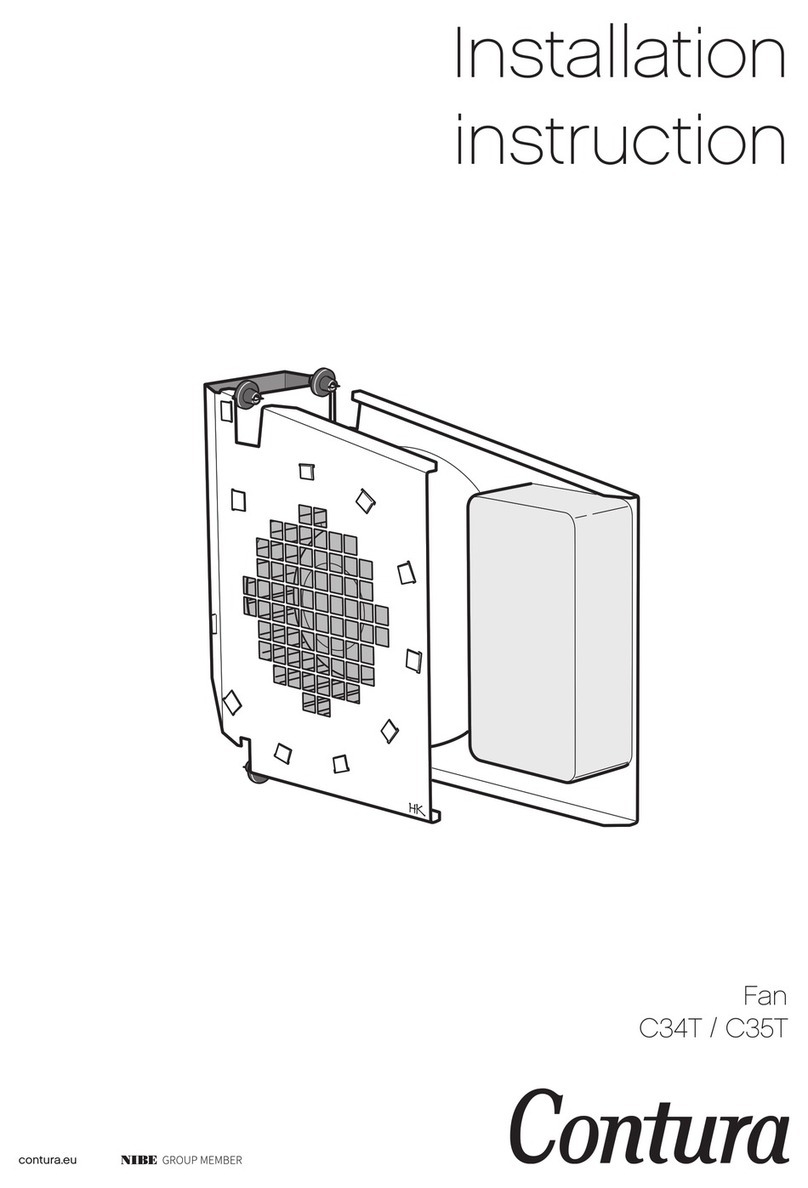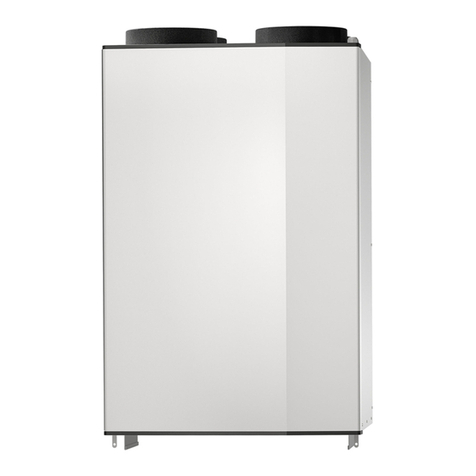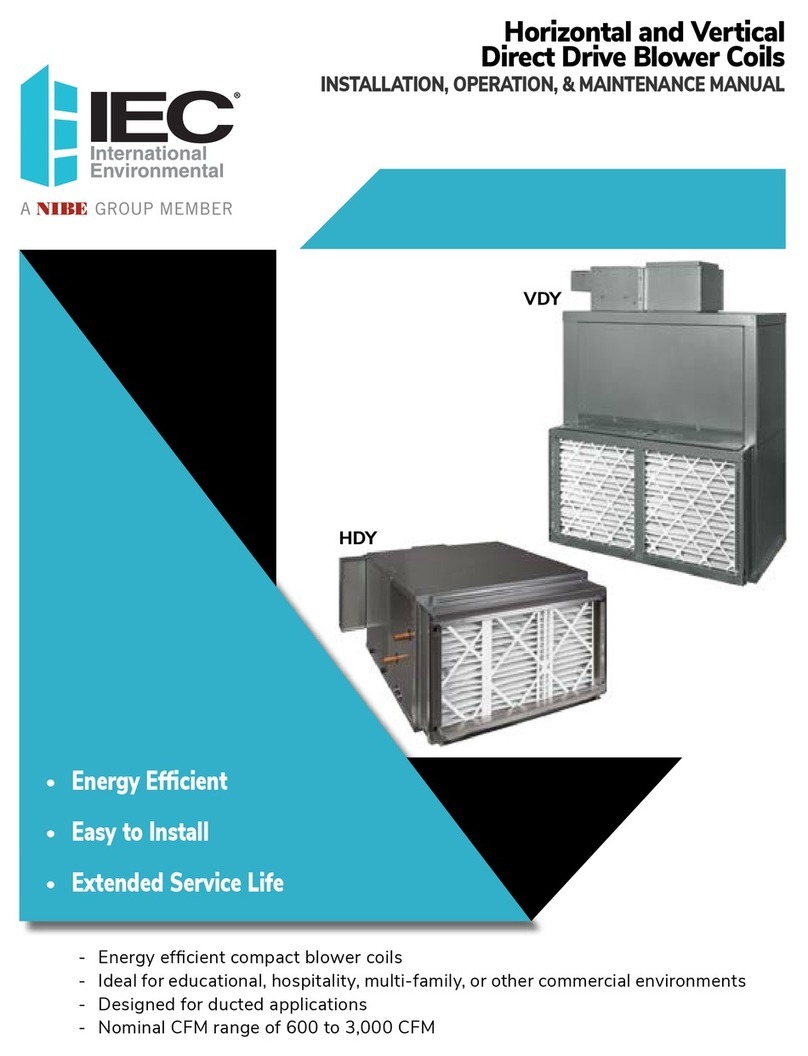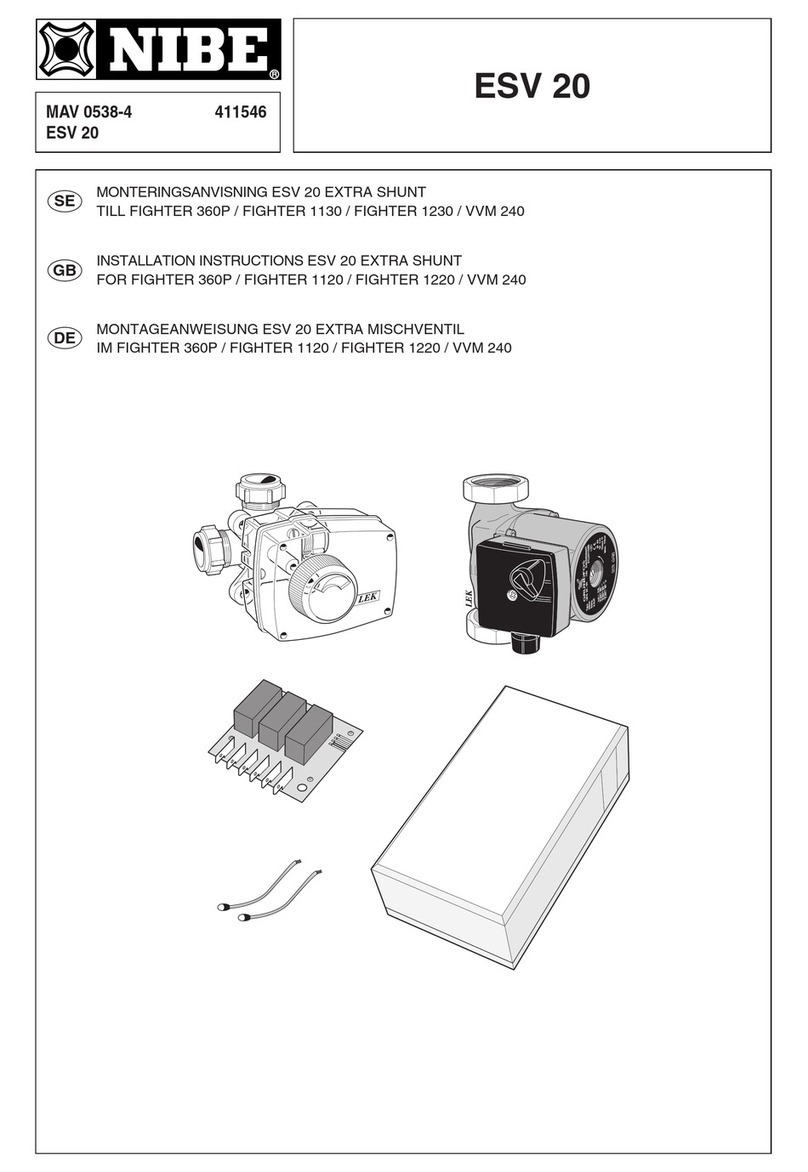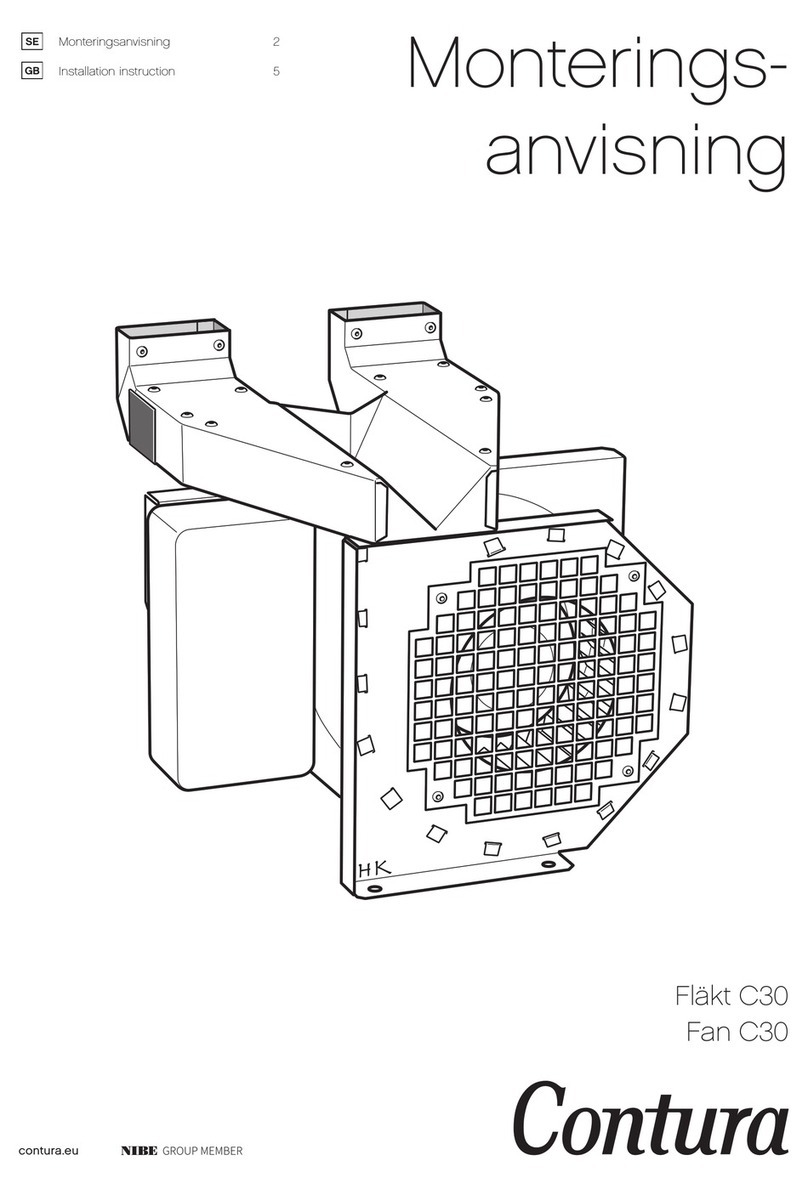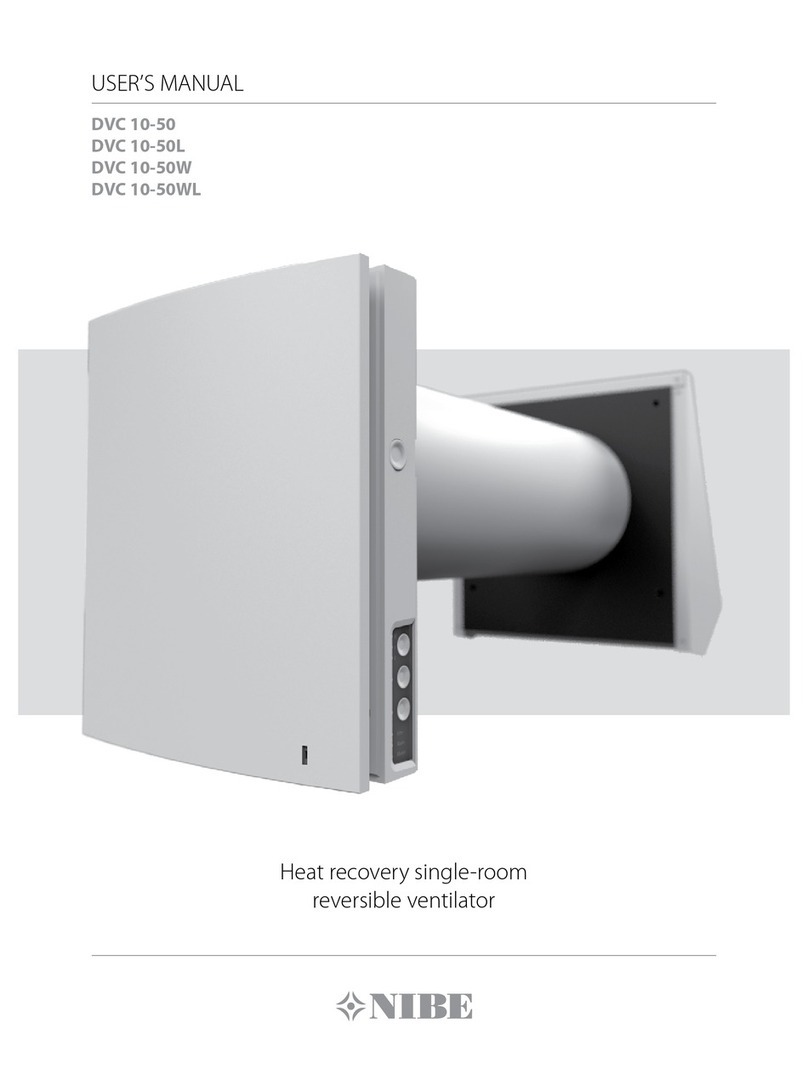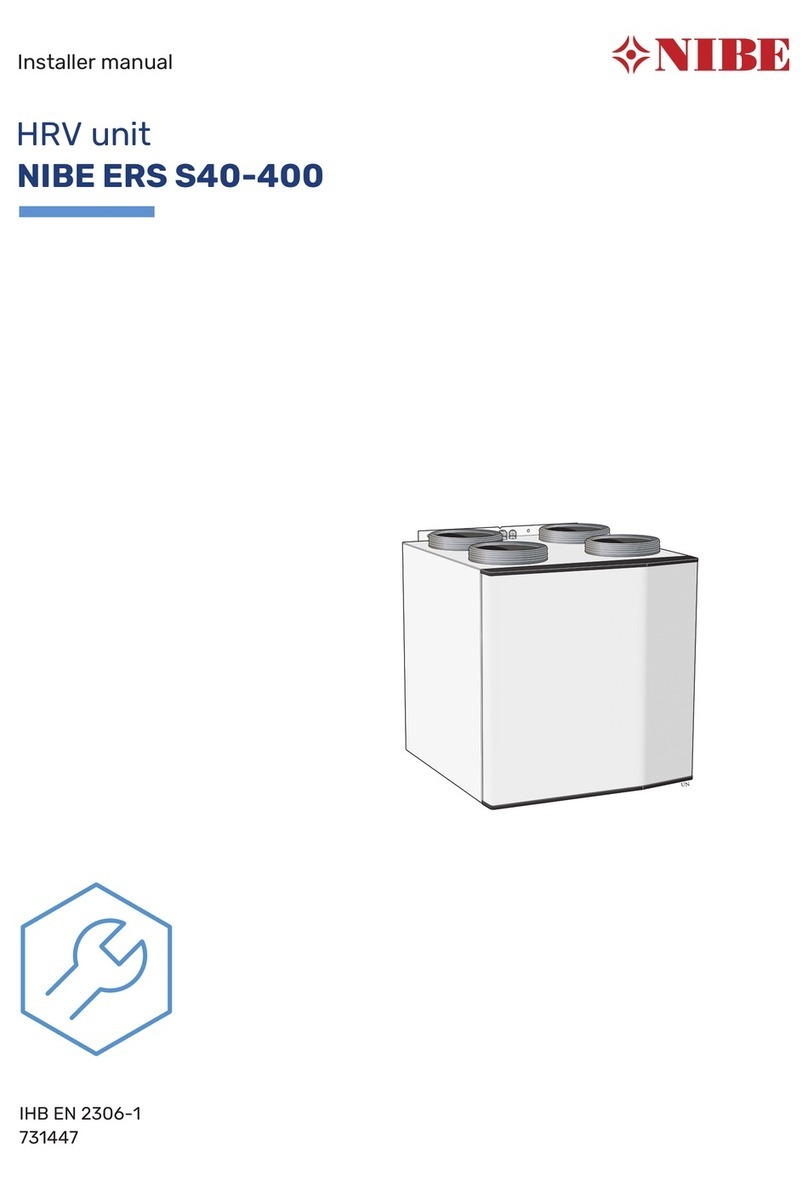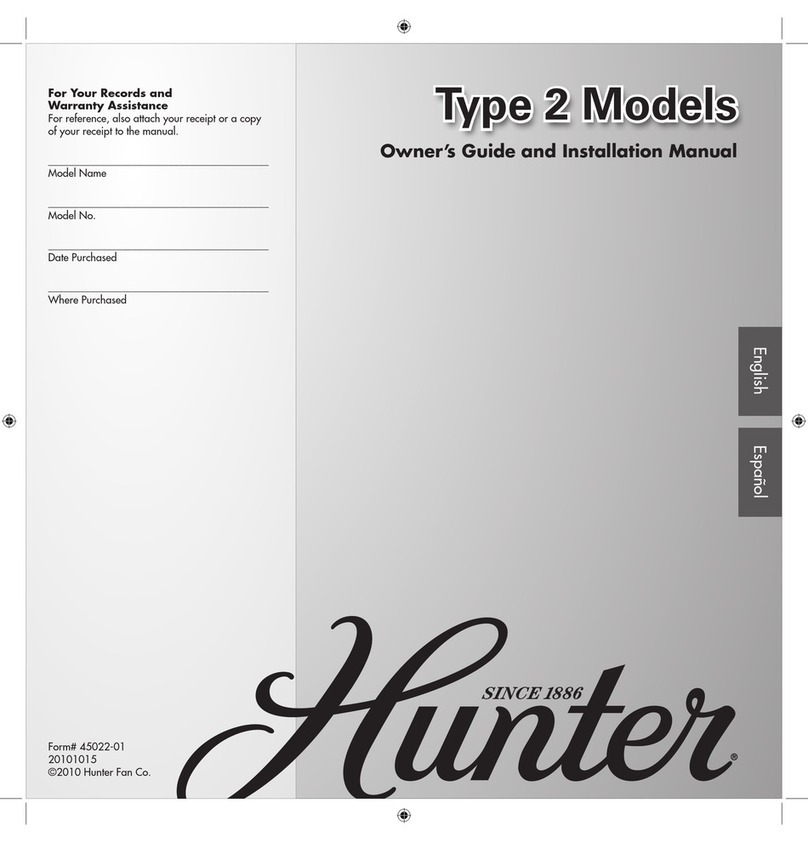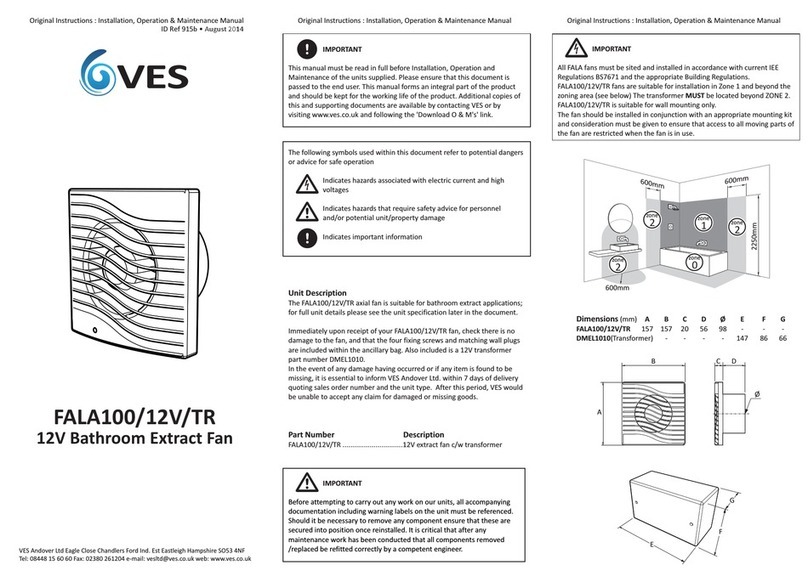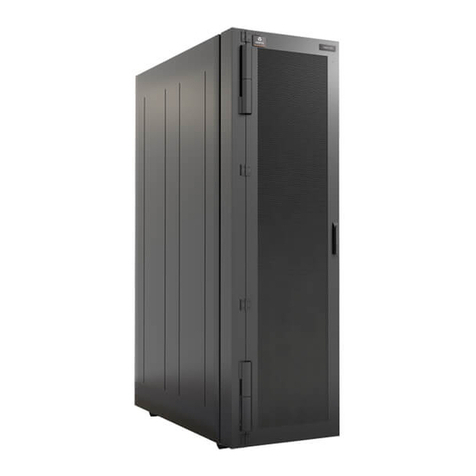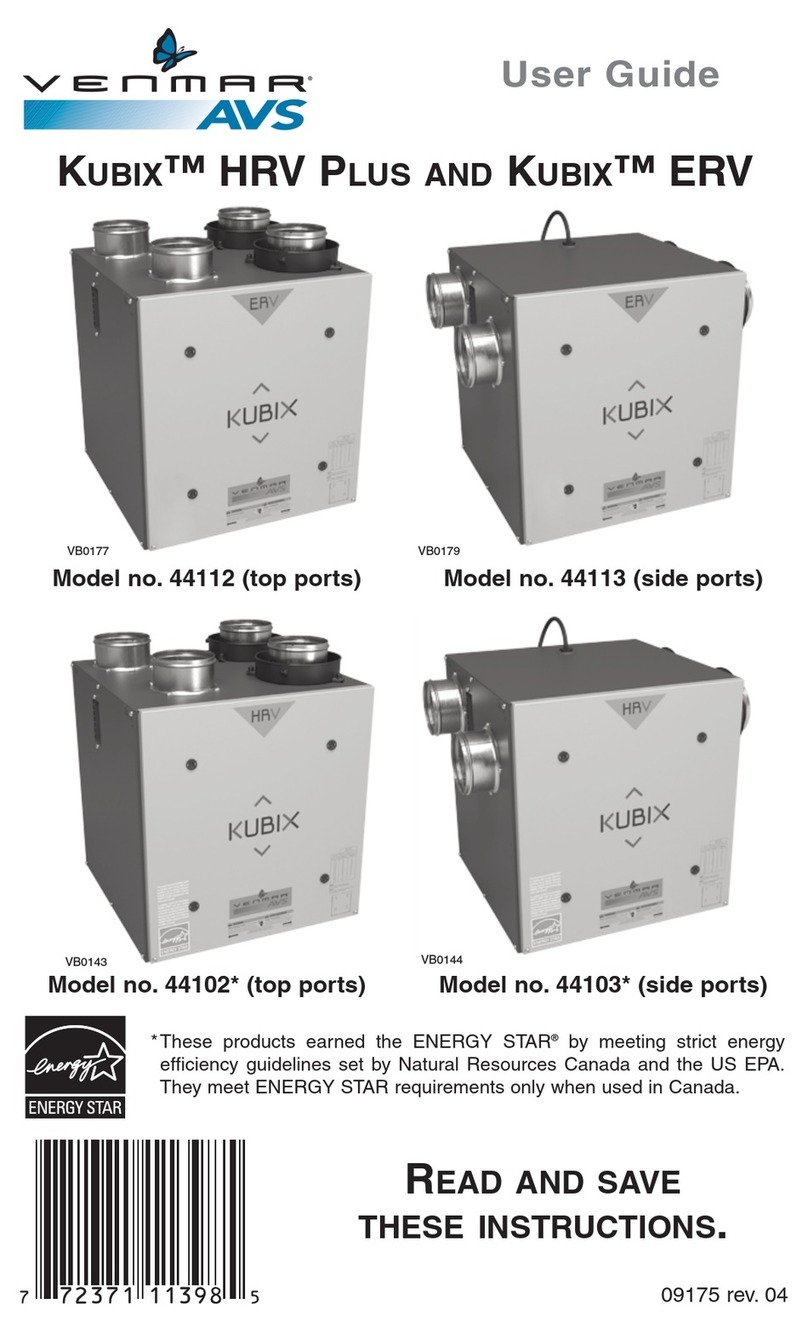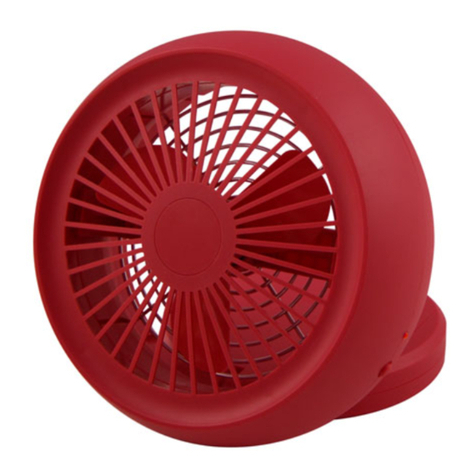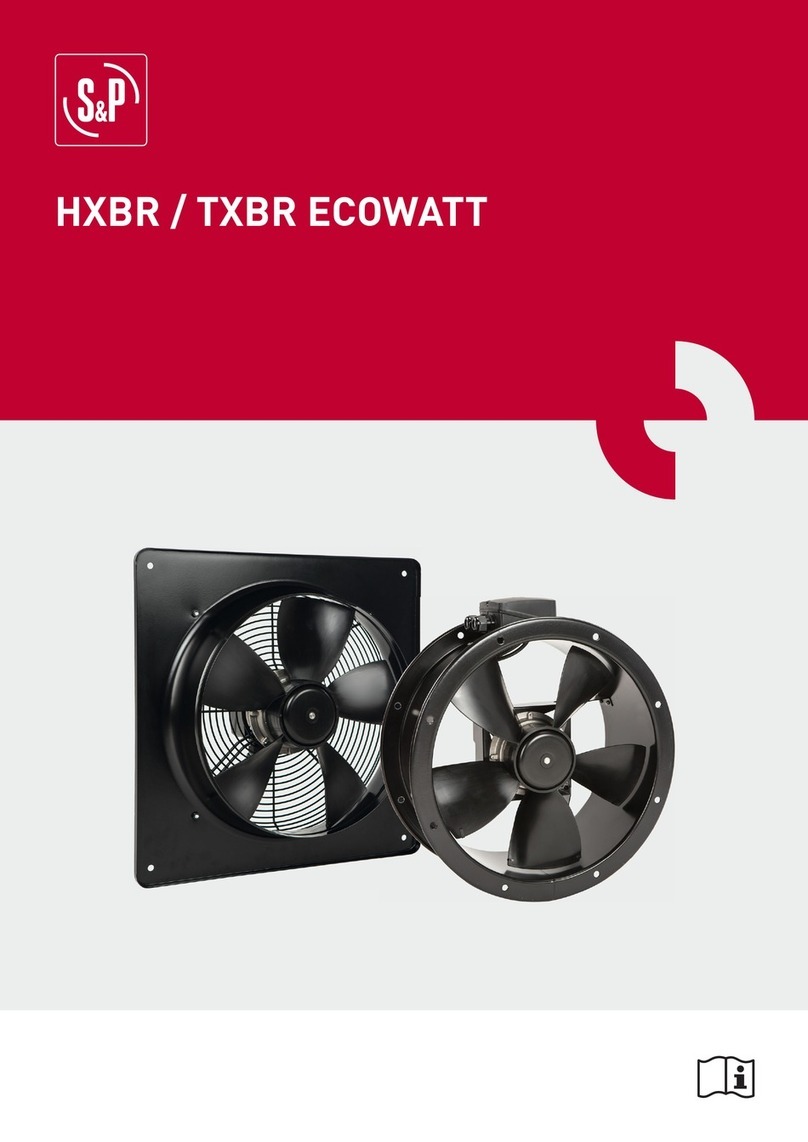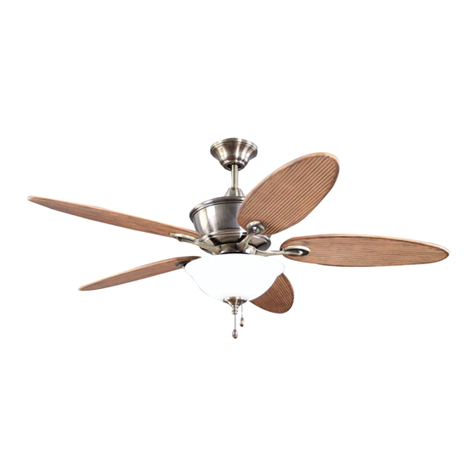
0 ºC
-3 º C
22 ºC
-3 º C 0 ºC
0 ºC
5 ºC-4 ºC
100 ºC
35 ºC25 ºC
Brine
Refrigerant
Evaporator
Condenser
Expansion valve
Compressor
1
2
Heat source
Czynnik obiegu dolnego źródła
Exhaust air module
function
An exhaust air module uses the heat that is in the
building's ventilation air to heat up the brine.
Brine circuit
An anti-freeze liquid (brine) circulates in a hose (collector)
from the heat pump out to the heat source
(rock/ground/lake). The energy from the heat source is
stored by it heating the brine a few degrees, from about
–3 °C to about 0 °C.
A
The collector then routes the brine to the heat pump’s
evaporator. Here, the brine releases heat energy and the
temperature drops a few degrees. The liquid then returns
to the heat source to retrieve energy again.
B
Refrigerant circuit
Another liquid circulates in a closed system in the heat
pump, a refrigerant, which also passes the evaporator.
The refrigerant has a very low boiling point. In the evapor-
ator the refrigerant receives the heat energy from the brine
and starts to boil.
C
The gas that is produced during boiling is routed into an
electrically powered compressor. When the gas is com-
pressed, the pressure increases and the gas’s temperature
increases considerably, from approx. 5°C to approx. 100°C.
D
From the compressor, gas is forced into a heat exchanger,
condenser, where it releases heat energy to the heating
system in the house, whereupon the gas is cooled and
condenses to a liquid form again.
E
As the pressure is still high, the refrigerant can pass an
expansion valve, where the pressure drops so that the
refrigerant returns to its original temperature. The refriger-
ant has now completed a full cycle. It is routed to the
evaporator again and the process is repeated.
F
Heat medium circuit
The heat energy that the refrigerant produces in the con-
denser is retrieved by the climate system's water, heating
medium, which is heated to 35 °C (supply temperature).
G
Ventilation
The hot air is transferred from the rooms to the heat pump
via the exhaust air module.
J
The fan then routes the air to the exhaust air module heat
exchanger. Here, the air releases the heating energy to
the brine and the air's temperature drops significantly. The
cold air is then blown out of the house.
K
The temperatures are only examples and may vary between different installations and time of year.
FLM S45Chapter 2 | The heating installation – the heart of the house6
2 The heating installation – the
heart of the house

